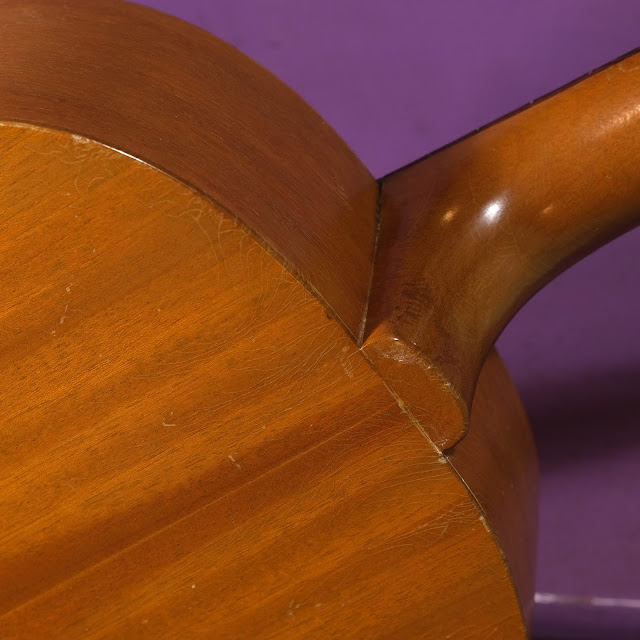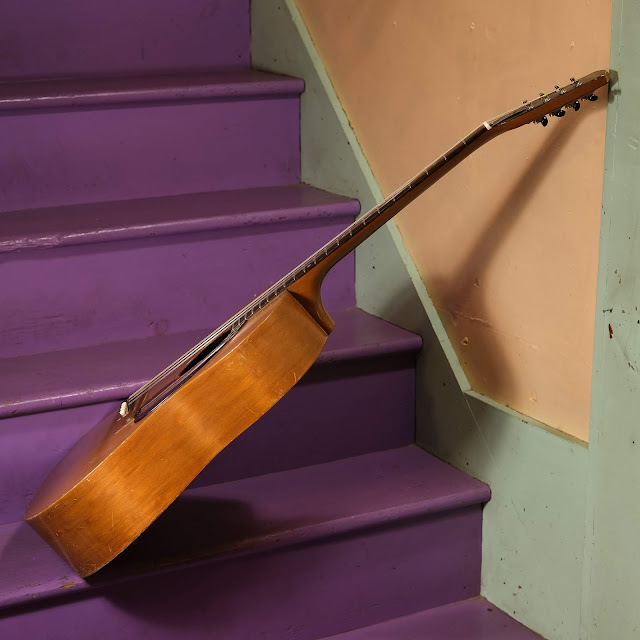1968 Gibson B-15 Bouzouki Conversion
A customer of mine was pestering me with emails about how he wanted a guitar-bouzouki and wanted to convert a guitar to one. I say "pester" but I do enjoy gear-hunts! I told him that the most important thing to consider on a project like this is that you should hunt for a narrow nut width and a truss-rodded neck. The former is important to keep string-spacing suitable to 4 courses and the latter is important because of the extra string-tension. You still want to play it safe on gauges, but a truss helps with peace-of-mind.
I sent him on the hunt for a smaller-bodied late-'60s Gibson as most of them have nut widths under 1 5/8" and well-functioning truss rods. This '68 B-15 is what he came-up with and it arrived in good order (with no cracks) save the need for a neck reset and related work. Post-surgery, however, it sounds crisp and clean and has a nice, lush, woody vibe to its guitar-bouzouki chorus-sounding mwah.
Work included: a neck reset, fret level/dress, tuner replacement/conversion at the headstock, recut of the original nut to zouk setup, bridge pin fill/redrill for 4-pin alignment, new fixed and compensated rosewood saddle, and a setup. It plays bang-on with 3/32" bass and 1/16" treble action at the 12th fret. The neck is straight and the truss works. I have gauges 40w, 26w, 14, 10 and it's tuned in unison like an octave mandolin GG-DD-AA-EE low to high. The owner can switch to 17/40w and 11/26w stringing on the lower courses if he wants to have an octave/12-string sound to it -- and it should intonate pretty closely even with the change.
Scale length: 24 5/8"
Nut width: 1 9/16"
String spacing at nut: 1 5/16"
String spacing at bridge: 2 1/16"
Body length: 19 1/8"
Lower bout width: 14 3/8"
Waist width: 9 1/2"
Upper bout width: 11"
Side depth at endpin: 4 1/2"
Top wood: solid mahogany
Back/sides wood: solid mahogany
Bracing type: ladder
Fretboard: rosewood
Bridge: rosewood
Neck feel: slim-med C, ~10" board radius
Condition notes: it's been modified, obviously -- and the adjustable saddle has been replaced with a fixed, drop-in one. Frets are in good order and almost full-height, the finish looks great aside from minor scratches, and it looks pretty authentic at a glance.
When I drilled the new pinholes, I cut twin slots in the front of them so you can double-load the pins. This makes for a much tidier and more accurate path for the strings. I always abhor the usual 12-pin designs on 12-string guitars as the differing back-angle for each pair of strings changes the tone string-to-string.
I was lucky-enough to have these same-era mandolin tuners in my bins which just happen to be almost exactly the same open-backed Kluson plates that were on this in its 6-string format.















Comments